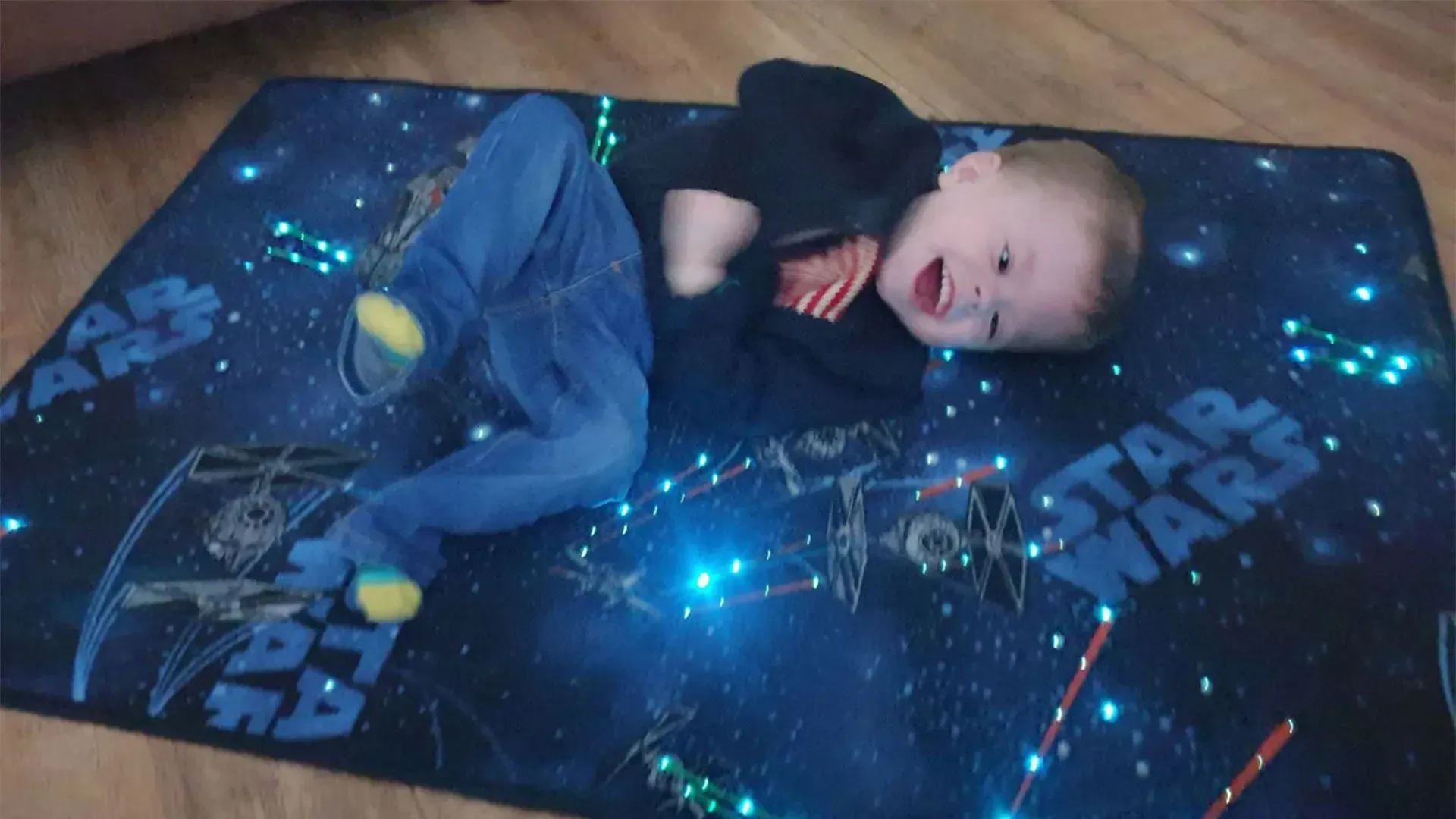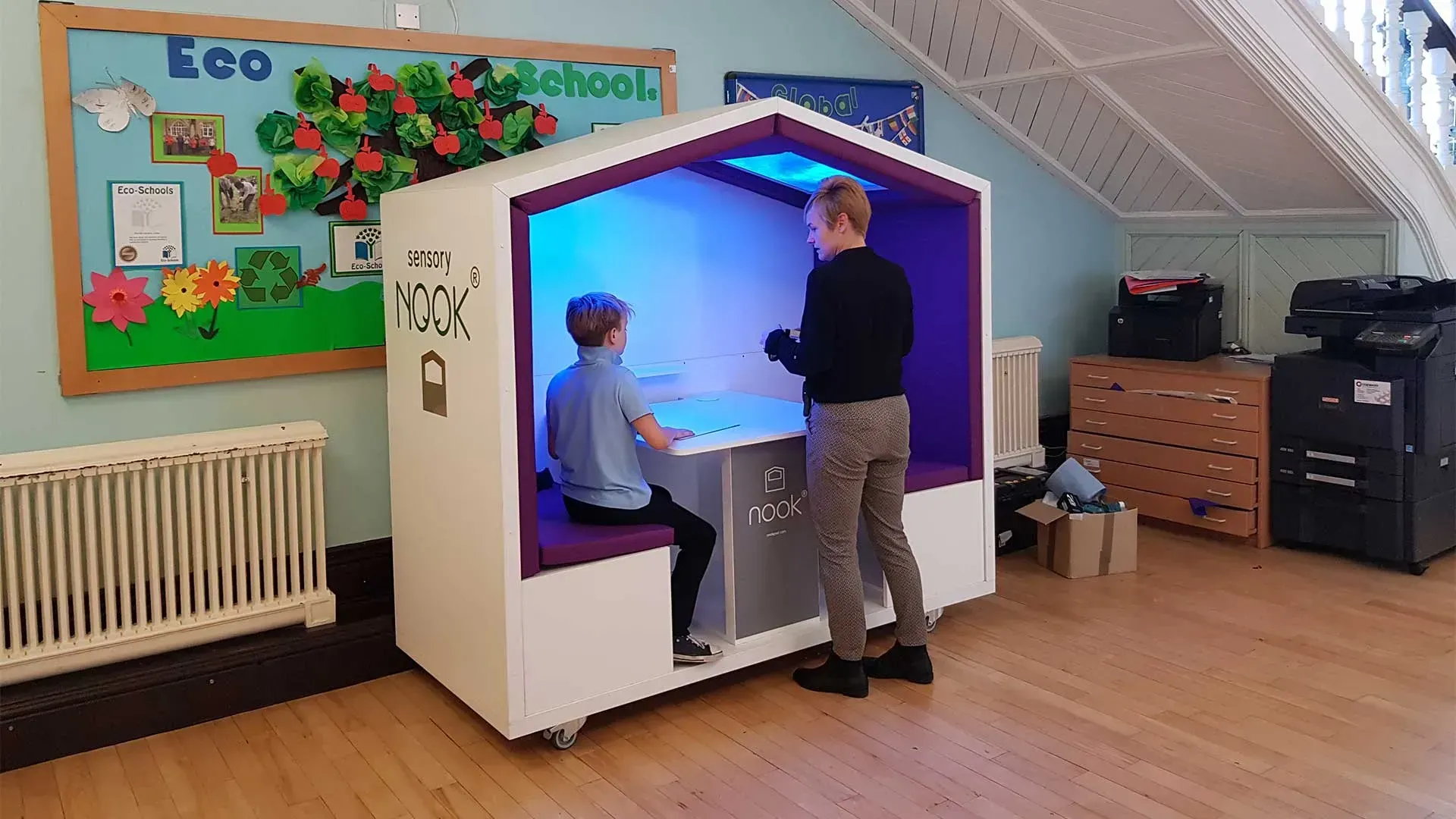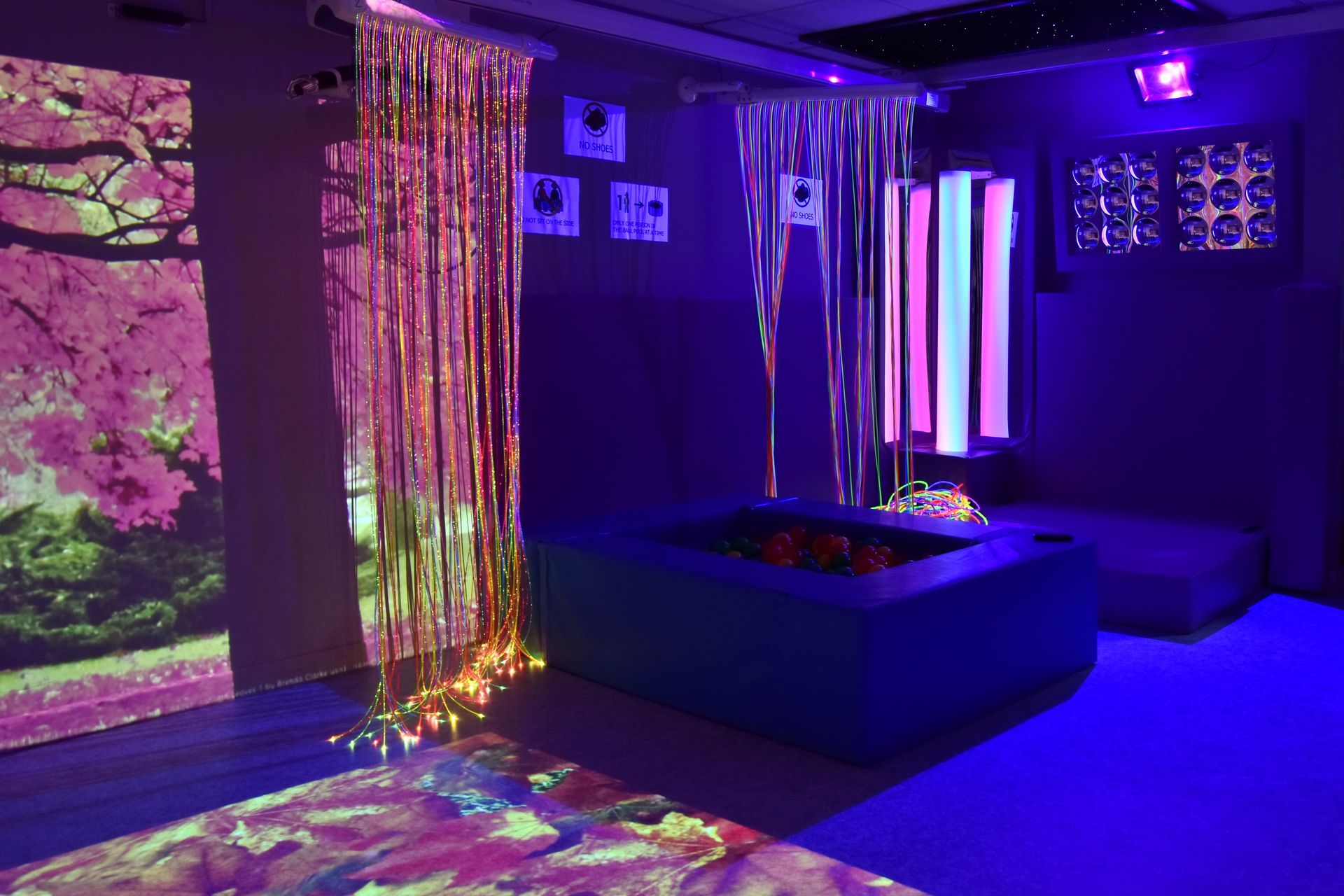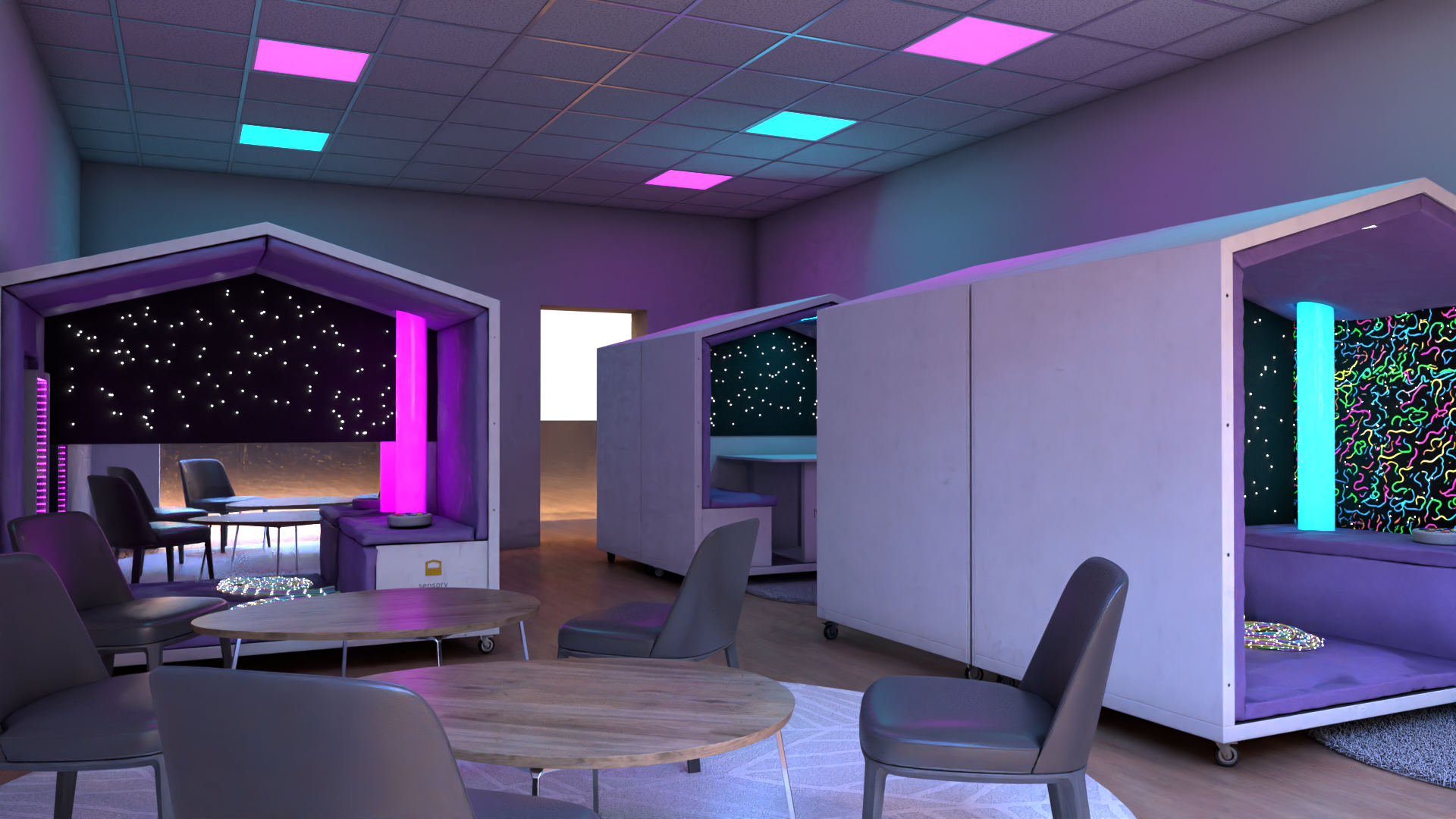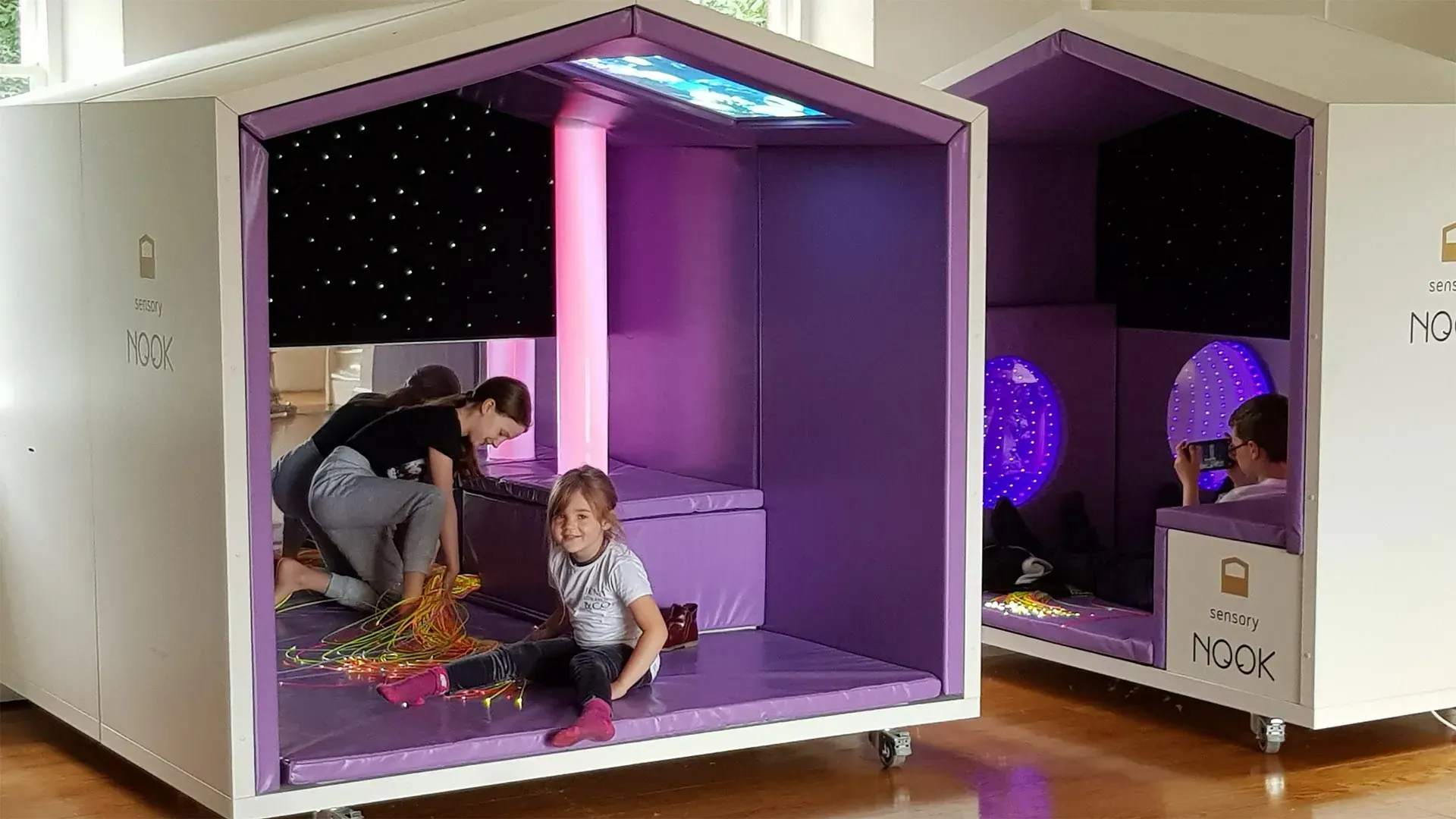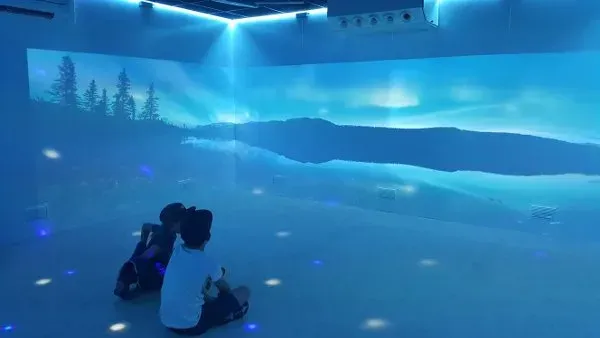Pentonville Prison Sensory Room: A Transformative Space for Neurodiverse Inmates
In a ground-breaking initiative, Pentonville Prison has unveiled its new neurodiversity unit, complete with a state-of-the-art sensory room designed and installed by sensory specialists, AmbiSpace Ltd. This innovative rehabilitation room aims to enhance the well-being and self-regulation of inmates with neurodiverse conditions that in prison frequently leads to challenging behaviour and self harm.
The Neurodiversity Unit
Creating a Supportive Environment
The neurodiversity unit is designed to cater specifically to the needs of neurodivergent inmates. Plain walls minimize visual clutter, while noise absorption panels ensure a calm atmosphere. Inmates can access earplugs to reduce sensory overload.
The Sensory Room
At the heart of the unit lies the sensory room, an intelligently converted cell providing a calming haven for inmates seeking support and solace. Here, inside a sensory calming oasis, they can explore tactile surfaces, soothing lighting, and positive interactive elements. The sensory room promotes emotional regulation, stress reduction, and self-reflection.
There were a number of challenges to overcome in the design of the sensory room. Firstly, it had to be secure and safe for adults who may be severely agitated and even violently destructive. It had to have a capacity for proactive and rapid calming with positive distractions and interactive engagement for self-regulation and exploration. It needed to be multi-sensory to cover a broad range of neurodiverse conditions and controllable to adapt to individual requirements. The space needed to be welcoming and comforting so it is seen as a positive intervention that can support therapy sessions. All these boxes had to be ticked and delivered strictly to budget.
Fortunately, AmbiSpace are leaders in bespoke sensory designs created to be effective in the real world where available spaces are less than ideal but filled with potential for a creative company with many years of experience.
Carrying out installation in a disciplined manner to a rigid timetable in such a secure environment needed meticulous planning too, which again required an accredited and skilled team effort.
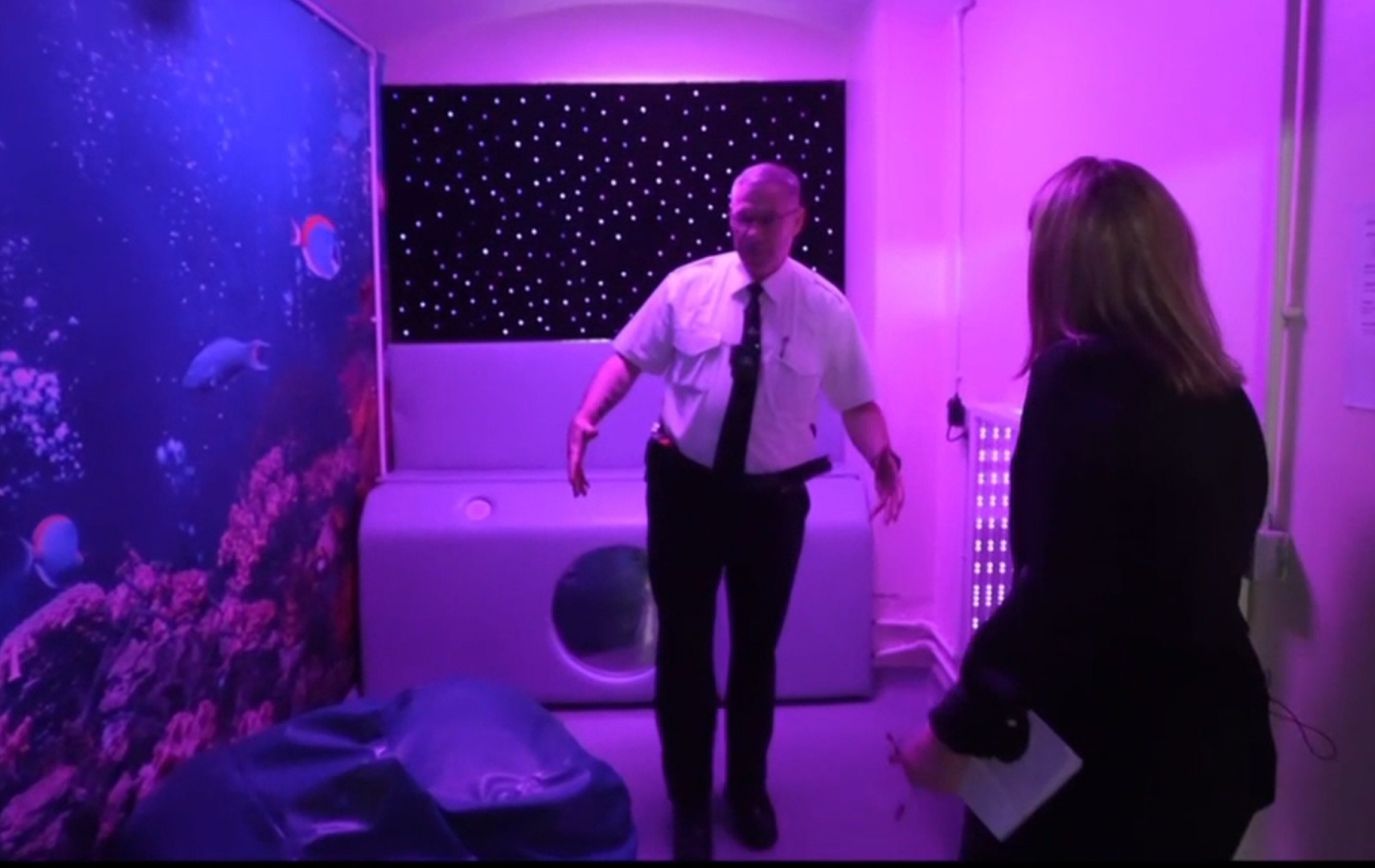
Impact & Future Plans
Positive Feedback
Inmate Stephen, who has ADHD and Dyslexia, attests to the transformative power of the sensory room...
Stephen has spent two decades stuck in a cycle of in and out of prison. He describes it as a lifeline, helping him break free from the continuous cycle of reoffending.
The prison staff see it as a wonderful tool to support them in their roles as custodians and often carers. There is a reduction in violence, and self-harm amongst inmates leading to a reduction of staff absences through injury and stress.
"Put a sensory room in every single prison in the country"
- Neil Fraser, Custody Manager at Pentonville Prison.
Expanding the Model
Pentonville's success serves as a model for other correctional facilities. The neurodiversity unit demonstrates the importance of creating inclusive spaces that prioritize mental health and rehabilitation to educate and break the cycle of reoffending.
Last month, AmbiSpace installed a similar calming sensory space in HMP High Down prison and have designs submitted for two more UK based prisons. The prison service and supporting NHS services are to be highly commended for such positive social actions.
Conclusion
The sensory room at Pentonville Prison represents a beacon of hope - a place where inmates can find respite, healing, and a chance for positive change. The BBC 10 o'clock news story gives a clear insight in to how effective sensory support for neurodiverse conditions can be not only for the neurodiverse individuals but the people working with them too.
Let us continue to advocate for such initiatives across the criminal justice system and let us increase the positive growth of sensory provisions in wider society to prevent the stresses building up in people who may then go on to become offenders simply because they cannot cope in the wider world without respite being available.
The AmbiSpace mission is to see more Sensory Spaces in Everyday Places for the benefit to all of society. By creating more available sensory rooms and Sensory Nooks in schools, libraries, entertainment venues, shopping centres and many other places most people see as readily accessible, we create an inclusive society that embraces the differences in how we function as individuals and contribute as a whole.
Feel free to share this blog post and spread awareness about the impact of sensory rooms in prisons! 🌟🔮🌈12
I hope you find this blog post informative and engaging! If you have any further questions or need additional details, feel free to ask.
This wonderfully positive story was featured on the BBC News at Ten on 16th May 2024. Take a look at the full story below.
Share Post

